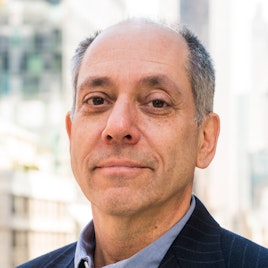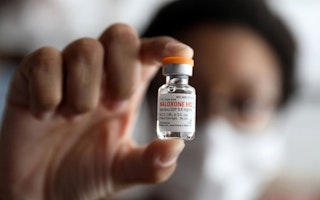UNAIDS Report: No Love for Drug Users
By Daniel Wolfe
The UNAIDS annual report released yesterday is a testament to great progress—new HIV infections and AIDS deaths are down sharply in many African countries that have been devastated by the HIV epidemic. But this success stands in stark contrast to the losses in Eastern Europe, where the HIV toll keeps climbing and remains concentrated among people who inject drugs. In Eastern Europe and Central Asia (where four of every five HIV cases are among people who inject drugs), new HIV infections and AIDS deaths are increasing faster than anywhere in the world, which is little surprise given estimates that people who inject drugs have no access to sterile injection equipment 95 percent of the time.
Drug users and other criminalized groups at risk for HIV—like sex workers and men who have sex with men—are frequently viewed by governments as political and social embarrassments that are best ignored. As one government official from Russia—the country with the highest number of HIV infections in the region, and the lowest commitment to HIV prevention for the drug users most affected—once told me, “AIDS and drugs will solve each other.” This year Russia didn’t even bother to report on its progress against HIV to the UN. But Russia is not alone in regarding criminalized groups as someone else’s problem. The UNAIDS report notes that in low and middle income countries with available data, 91 percent of total spending on HIV programs for sex workers comes from international sources; as does 92 percent of spending on HIV programs for men who have sex with men, and 92 percent of spending on HIV programs for people who inject drugs.
Spending on law enforcement, of course, is robust. In many countries, detention and prison—where HIV prevention and treatment are unavailable, but rape and unsafe drug injection is routine—can arguably be regarded as a cause of AIDS. Small wonder then that countries who invest in policing and imprisoning those at greatest risk while shorting HIV programs see more death and more infection.
Despite these facts, ‘Getting to zero,’ the UNAIDS slogan for the AIDS response, is actually achievable in epidemics concentrated among people who inject drugs. By increasing access to needle and syringe programs and prescription of medicines to treat HIV, and reducing cravings for and injections of heroin, some countries have stamped out new infections among drug users almost entirely. This won’t happen on a broader scale until more national governments and international donors move from denial to action, change their laws, and prioritize services—including prevention, treatment and legal aid—that work for criminalized groups at greatest risk. We may not have a cure for AIDS, but we can certainly cure the crisis of indifference, and end the cycle where each World AIDS Day brings more bad news for sex workers, men who have sex with men, and people who inject drugs.

Until December 2021, Daniel Wolfe was director of the International Harm Reduction Development Program at the Open Society Foundations.

